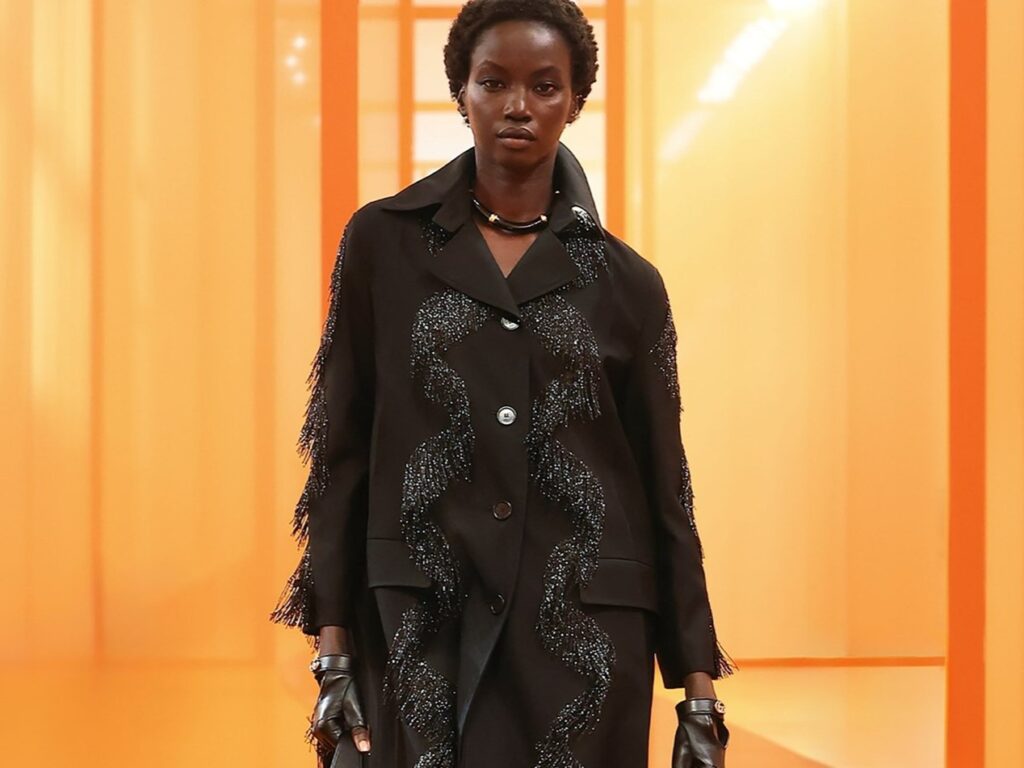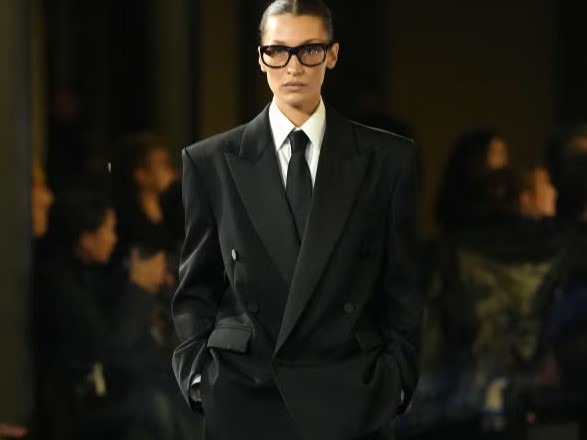Logogram Post COVID-19
The decline in the popularity of logos is not a sudden shift but a gradual evolution influenced by various socio-economic factors. The COVID-19 pandemic played a pivotal role in reshaping consumer behaviour. As the world grappled with economic uncertainty, ostentatious displays of wealth became less appealing. The concept of “recession-core” emerged, characterized by a preference for understated, timeless pieces over flashy, logo-laden items. Consumers grew tired of the flashy logos that had been paraded around.
Consumers are increasingly seeking authenticity and value in their purchases, favouring brands that align with their personal values and lifestyles. This shift was evident in the recent collections showcased at PFW, where designers moved away from overt branding in favour of more nuanced expressions of their brand identity.
Gucci’s Renaissance
A prime example of this trend is Gucci’s recent collection at Milan Fashion Week SS25. Under the new creative direction of Sabato De Sarno, Gucci has experienced a remarkable 30% increase in consumer interest. This surge can be attributed to the brand’s strategic pivot away from the logo-heavy designs of Alessandro Michele’s tenure. As much as I adored Michele’s Hollywood glamour and eccentric avant-garde narrative, his collections were known for being part of the maximalist aesthetic, often featuring bold logos and extravagant embellishment. An approach that post-COVID consumers, now more conscious of overconsumption and flaunting luxury, began moving away from.
In contrast, De Sarno’s debut collection for Gucci embraced a “less is more” philosophy. The designs featured clean lines, set colours, and subtle logos throughout the collection. A significant decrease in logos compared to their past collections. This approach resonated with consumers who are increasingly drawn to understated elegance, tailoring and quality craftsmanship. The success of Gucci’s new direction underscores the broader industry trend towards minimalism and authenticity.

Codes and Values: The New Luxury
At PFW SS25, several designers showcased collections that emphasised codes and values over logos. Brands like Dior, Saint Laurent, and Valentino presented pieces that communicated their heritage and ethos through design elements rather than overt branding. This shift reflects a deeper connection between brands and consumers, built on shared values and cultural narratives.
Dior’s collection, for instance, drew inspiration from the house’s archives, reinterpreting classic silhouettes with modern twists. The absence of prominent logos allowed the craftsmanship and design to take centre stage, appealing to consumers who appreciate the artistry behind the garments. Similarly, Saint Laurent’s collection featured sleek, tailored pieces that exuded sophistication without relying on logos to convey luxury.

The Influence of Emerging Designers
Emerging designers also played a crucial role in driving this trend at PFW SS25. New talents like Marine Serre and Thebe Magugu showcased collections that prioritised sustainability, inclusivity, and innovation. These designers are redefining luxury by focusing on ethical practices and meaningful storytelling, resonating with a new generation of conscious consumers—a shift which we are now seeing high-fashion houses attempt to imitate.
Marine Serre’s collection, for example, incorporated upcycled materials and eco-friendly fabrics, reflecting the brand’s commitment to sustainability. The designs were marked by intricate details and thoughtful construction, demonstrating that luxury can be both beautiful and responsible. Thebe Magugu’s collection celebrated African heritage and craftsmanship, using traditional techniques to create contemporary pieces that tell a story. Consumers are increasingly aware of brand values and storytelling, and they support emerging designers for their integrity. Their most popular piece being their symbolic crecent print body suit, is logogram done consciosuly.
In an article with The Guardian, Serre stated “The moon for us is like an icon, an emblem, an image, a representation, a flag, a language, a metaphor, an object of what we believe in: crossing boundaries, hybridity and freedom,” Serre told Dazed and Confused. Its role in all things astrological, which is enjoying a renaissance, is also significant (almost 30% of Americans believe in astrology according to a Pew research poll). The crescent print became a print of identity and storytelling, stiking a melodic chord with consumers. A new way at looking at logograms.

The Future of Logogram
The fall of the logogram at PFW SS25 signals a broader shift in the fashion industry towards a more thoughtful and intentional approach to design. As consumers become more discerning and values-driven, brands must adapt to meet their evolving expectations. The success of collections that prioritise codes and values over logos suggests that the future of fashion lies in authenticity, quality, and meaningful connections—unless, of course, your brand is defined by logos and maximalism.
This trend also reflects a growing awareness of the environmental and social impact of fashion. By moving away from logo-centric designs, brands can focus on creating pieces that are not only aesthetically pleasing but also sustainable and ethical. This shift is not just a passing trend but a fundamental change in the way fashion is conceived and consumed.
The fall of the logogram is not just a trend but a reflection of a deeper cultural shift towards a more conscious and considered approach to fashion. Yet, logos will always speak volumes, act as promotional devices for the average consumer, and continue to play key roles in selling garments.
Featured Image: The Row, Spring 2025 Ready-to-Wear
Got feedback or submissions? Contact at hello@mariaahmad.com

